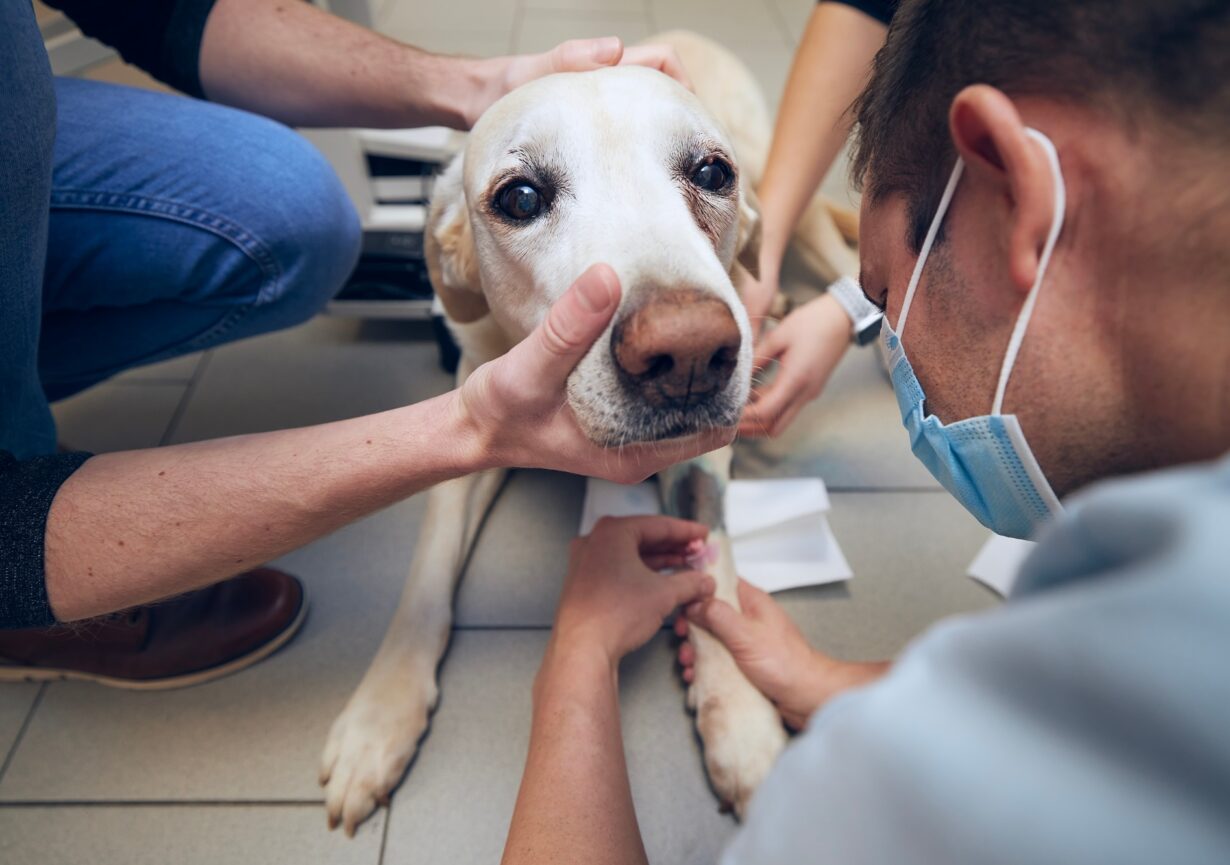Separation anxiety is a common behavioral issue that affects many pets, especially dogs and cats. It occurs when pets become distressed and anxious when left alone or separated from their owners. This anxiety can manifest in destructive behavior, excessive barking, whining, or even physical symptoms. Understanding how to identify separation anxiety and applying effective calming techniques can improve your pet’s quality of life and strengthen your bond. This article explores the causes, symptoms, and most effective methods to help your pet overcome separation anxiety.
1. Recognizing Separation Anxiety in Pets
What Causes Separation Anxiety?
Separation anxiety often develops due to a strong attachment between pets and their owners. Pets may fear abandonment or feel insecure when left alone, leading to distress. It can be triggered by changes such as moving to a new home, changes in routine, or the loss of a family member.
Certain breeds, especially dogs bred for companionship, are more prone to separation anxiety. Puppies separated from their mothers too early or rescued animals with traumatic pasts may also be at higher risk.
Signs and Symptoms to Watch For
Pets with separation anxiety may exhibit a range of behaviors. Common signs include destructive chewing, scratching at doors or windows, vocalizing excessively, pacing, drooling, or attempting to escape.
Some pets might lose appetite or have accidents indoors even if they’re house-trained. Physical symptoms like trembling or panting are also common. These behaviors usually occur soon after the owner leaves and subside when they return.
2. Preparing Your Pet for Alone Time
Establishing a Consistent Routine
Pets thrive on routine. Establishing predictable daily patterns helps your pet feel secure even when you’re not around. Feeding, walks, and playtime should happen at regular times to build stability.
Try to keep departures and arrivals low-key to avoid building anxiety around those moments. Avoid overly emotional goodbyes or greetings as these can heighten your pet’s stress.
Gradual Desensitization
One effective way to reduce anxiety is through gradual desensitization—slowly getting your pet used to being alone in small increments. Start by leaving your pet alone for just a few minutes, then gradually increase the duration over days or weeks.
Pair these short separations with positive experiences, like treats or toys, to help your pet associate alone time with good things. Avoid sudden, long absences early on as they can worsen anxiety.
3. Creating a Comforting Environment
Safe Spaces and Calming Aids
Providing a safe, cozy area can help your pet feel secure. This might be a crate, a quiet room, or a comfortable bed where your pet can retreat when you leave.
Consider adding familiar scents, like worn clothing with your smell, to reassure your pet. Calming aids such as pheromone diffusers (like Adaptil for dogs) or calming collars can also reduce anxiety by mimicking comforting natural smells.
Interactive Toys and Enrichment
Keeping your pet mentally stimulated can distract them from their anxiety. Puzzle toys, treat-dispensing games, and chew toys engage their minds and reduce boredom.
Frozen Kongs stuffed with peanut butter or special treats provide long-lasting entertainment and a positive focus while you’re gone. Regular mental and physical exercise also decreases overall stress levels.
4. Behavioral Training Techniques
Counterconditioning
Counterconditioning involves changing your pet’s emotional response to being alone from negative to positive. This can be done by pairing your departure cues (like picking up keys) with something pleasurable, such as a favorite treat or toy.
Over time, your pet learns to associate these cues with good things rather than your leaving, easing their distress.
Command Training and Independence
Teaching commands that promote independence—like “stay” or “go to your place”—builds your pet’s confidence being separated from you. Reward calm behavior when your pet remains relaxed during short separations.
Gradually increase the difficulty of these exercises to reinforce your pet’s ability to stay calm alone.
5. When to Seek Professional Help
Recognizing Severe Anxiety
Sometimes separation anxiety is so severe that it causes intense distress and self-harm. If your pet destroys furniture, injures themselves, or displays relentless vocalizing despite your best efforts, professional intervention may be needed.
Veterinarians or certified animal behaviorists can diagnose the issue and suggest tailored treatment plans.
Medical and Therapeutic Options
In some cases, medication may be prescribed alongside behavior modification to help reduce anxiety symptoms. Anti-anxiety drugs or natural supplements can make it easier for pets to cope while training takes effect.
Professional trainers and behaviorists offer specialized techniques, including desensitization programs and personalized advice to address underlying issues effectively.
6. Maintaining Progress and Preventing Relapse
Consistency is Key
Maintaining calm departures and arrivals, consistent routines, and regular training exercises helps your pet retain progress. Avoid sudden changes in schedule that could trigger anxiety.
Keep practicing independence-building exercises even after symptoms improve to prevent relapse.
Building a Support Network
If you are away frequently, consider pet sitters or doggy daycare to provide social interaction and supervision. A support system can reduce your pet’s alone time and keep them emotionally balanced.
Regular check-ins from trusted friends or family can also ease your pet’s stress during absences.
Conclusion
Separation anxiety in pets is a challenging but manageable issue. Recognizing the signs early and applying calming techniques like gradual desensitization, creating a comforting environment, and using behavioral training can significantly improve your pet’s well-being. For severe cases, professional help and possible medication may be necessary.
With patience, consistency, and understanding, you can help your pet overcome separation anxiety and feel secure even when alone. This will deepen your bond and make every reunion even sweeter.


